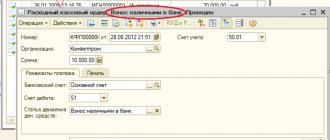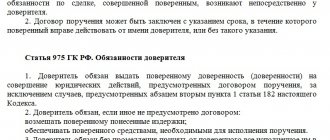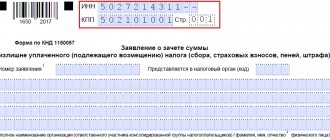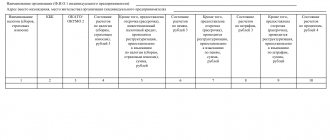and legal entities pay taxes within the chosen taxation system. Each tax has its own base, rate and payment deadlines. If these deadlines are violated, a tax arrear arises, due to which the Federal Tax Service imposes a fine, charges penalties and blocks the current account.
To avoid such unpleasant consequences, every businessman needs to keep this issue under personal control. Even if you have a qualified specialist doing your accounting, it would be a good idea to double-check this information.
Free tax consultation
Punishment for non-payment of taxes
So, paying taxes is one of the main responsibilities of taxpayers (subclause 1, clause 1, article 23 of the Tax Code of the Russian Federation):
- Legal entities.
The amount to be paid to the budget is determined by the organization independently, depending on the taxation system applied. It is reflected in tax reporting submitted to the Federal Tax Service at the end of the reporting (tax) period.
- IP.
Entrepreneurs themselves calculate only those taxes that they pay in connection with their business activities. The only exception is PSN. In this mode, the tax (patent cost) payable is calculated by the tax authority. As for property taxes of individual entrepreneurs (on land, transport, property), the Federal Tax Service Inspectorate is responsible for their calculation.
- Self-employed (NPP payers).
The tax payable by self-employed citizens is calculated independently by the Federal Tax Service on the basis of data on the income received, reflected in the “My Tax” application. The amount to be paid is reflected in the application.
- Individuals.
In most cases, the Federal Tax Service calculates all taxes for individuals independently (property tax, land tax, transport tax). The exception is personal income tax. A citizen who has received taxable income from the sale of property (apartment, land, car) is obliged to declare it and pay income tax on it to the budget.
As punishment for non-payment of taxes, the Federal Tax Service has the right to:
- write off the amount of debt from the current account of an organization or individual entrepreneur (Article 46 of the Tax Code of the Russian Federation);
- block the taxpayer's current account (Article 76 of the Tax Code of the Russian Federation);
- seize the organization’s property (Article 77 of the Tax Code of the Russian Federation);
- go to court to collect the debt (clause 2 of article 45 of the Tax Code of the Russian Federation).
In addition to these sanctions, penalties and fines may be assessed on the amount of debt.
Certificate of debt from the Federal Tax Service
A certificate about the status of settlements with the budget will be required if an organization (IP) needs to find out the exact amount of debt for a specific tax.
The certificate of fulfillment of the obligation does not contain exact data on the amount of debt and the types of taxes for which this debt arose. It only reflects information about whether the taxpayer has fulfilled his obligation to pay taxes (fees, insurance contributions). If an organization or individual entrepreneur has an arrears, the Federal Tax Service will generate a certificate with the entry: “It has an unfulfilled obligation to pay taxes, fees, insurance premiums, penalties, fines, interest payable in accordance with the legislation on taxes and fees.” As a rule, this document is requested by legal entities when applying for participation in a tender or to obtain a loan from a bank.
To obtain such certificates, you will need to send a corresponding request to the Federal Tax Service. This can be done in your personal account on the Federal Tax Service website, by sending a request to the Federal Tax Service Inspectorate in writing or via TKS. This document does not have a unified form, but the Federal Tax Service website contains recommended request forms. To obtain certificates, we recommend using these document forms to avoid possible disputes with tax authorities:
Request for a certificate in writing:
Request for information in writing
Request for information on TKS:
Request for information on TKS
Types of arrears
A company may have various types of debt. Creditor claims can be current or overdue, large, medium or small, public or private. Based on their economic nature, there are several types of such debts:
| Type | Short description | Creditors |
| Taxes | The frequency and size of obligations to the budget are determined by the tax regime. In some cases, deductions depend on turnover, in others - on net profit. There are also systems in Russia, payments for which are calculated on a fixed income basis. | The tax service monitors the timeliness and completeness of payments. The territorial inspectorates of the Federal Tax Service of the Russian Federation act as collectors. |
| Mandatory insurance contributions | The organization is obliged to make regular contributions to pension, medical and social insurance of employees. Tariffs, terms and other rules are introduced by Chapter 34 of the Tax Code of the Russian Federation. In 2021, total insurance premiums remain at 30%. The calculation base is labor remuneration and related payments (Article 425 of the Code). Some organizations have the right to apply reduced rates (Article 437 of the Tax Code of the Russian Federation) | The administration of insurance premiums for compulsory pension and health insurance, as well as fees for state programs of temporary disability and maternity, is carried out by the tax service. It is she who becomes the collector in case of delay. The receipt of payments “for injuries” is monitored by the territorial branches of the Federal Social Insurance Fund of the Russian Federation |
| Credits and loans | The company may have debt to banks, microfinance organizations, pawn shops and other lenders. Debt obligations and the procedure for their execution are reflected in the financial statements. In addition, such information is accumulated in the credit history | The role of collectors is carried out by specialized associations or individuals. Sometimes this task is entrusted to professional debt collectors. |
| Requirements for civil transactions | Debt arises as a result of non-fulfillment of business contracts. Demands may be presented in case of non-payment for goods, work, services or violation of the contract - fines, penalties, penalties. A common option for creating debt is evading the return of an unpaid advance. | Collectors are suppliers, customers, performers and contractors, as well as other counterparties whose property rights have been infringed |
| Labor benefits | The procedure for settlements with personnel is determined by labor legislation, agreements and internal regulations of the company. Charges depend on the wage system established at the enterprise. Debt arises when the employer violates the schedule | The creditors are the employees. A trade union representative, a prosecutor, as well as a state labor inspector can act on behalf of employees |
Since a business company actively participates in turnover, debt can also arise as a result of civil torts. Thus, the company is obliged to compensate for damage caused to the health, property and life of third parties. Liability arises when the organization’s guilt in causing such damage is confirmed (Chapter 59 of the Civil Code of the Russian Federation).
How to find out tax debt through your personal account
An organization or individual entrepreneur can obtain data on existing tax debts and fees in their personal account on the Federal Tax Service website.
To register in your personal account, an organization will need to issue an electronic signature to the director or other responsible person of the company.
Individual entrepreneurs can use the login and password from the personal account of an individual taxpayer to access their personal account. If the individual entrepreneur has not opened a personal account at all, he can do this in 3 ways:
- By contacting any Federal Tax Service with your passport and TIN. After checking the documents, the tax authority employee will issue a document with a login and temporary password, which will need to be replaced within 1 month.
- Using the State Services login and password. This method is only suitable for those individual entrepreneurs who have a confirmed account on the State Services portal. If it is not there, then it is easier to contact the Federal Tax Service for a login and password for the LKN.
- Using digital signature. This option is convenient for those individual entrepreneurs who have a qualified digital signature. If it is not there, then issuing an electronic signature only for opening a personal identification document is inappropriate.
When and how the Federal Tax Service will provide information
Paper documents are received from the tax office in person or the Federal Tax Service sends them by mail to the company. The desired method of receipt must be indicated in the request. The electronic document is sent to the taxpayer via TKS.
The tax inspectorate is obliged to provide information on mutual settlements with the counterparty, both in paper and electronic forms, no later than 5 working days (clause 10, clause 1, article 32 of the Tax Code of the Russian Federation). But, as practice shows, the Federal Tax Service provides information in electronic form via telecommunication channels much faster. The response time, as a rule, does not exceed one or two days.
How to find out debt through State Services
This method is only relevant for individual entrepreneurs. Organizations will not be able to find out about their debt to the budget through State Services.
To receive information, an individual entrepreneur will need to log in to the system using the individual’s login and password. That is, in order to find out his debt, an individual entrepreneur must have a confirmed account with State Services.
Why can individual entrepreneurs find out about their debt through State Services, but organizations cannot? The whole point is that an individual entrepreneur is responsible for his obligations with all his property and his debts are transferred from him as an individual entrepreneur to him as an individual. Organizations, in exceptional cases, are liable for their obligations with personal property (subsidiary liability).
We will look at more details about how an individual can find out about his tax debt on the State Services portal below.
We dispel the myths that the founders are not liable with their property for the debts of the LLC
Vasily Ivanov, a young, talented and enterprising technical specialist, decided to open his own business because he came up with a mega-product. At the start of the business, he quit his job, registered an LLC with 10 thousand authorized capital, invested some of his own money, took out a small loan, and hired 5 technical specialists. The work started, but after six months it turned out that the product had no future, the money had run out, the loan had not been repaid, the employees owed wages for 2 months in the amount of 400 thousand net rubles and to the budget in the amount of 204 thousand rubles (approximately +51% on the amount of debt to employees, since there is 13% personal income tax, 31% Pension Fund + Compulsory Medical Insurance and other small things). In general, things are bad, it’s time to close down and go back to working “for your uncle.”
Question: what should Vasily do with debts and LLC?
Is it possible for him to bankrupt an LLC with the loss of only 10 thousand of the authorized capital, and for him to have nothing to do with it? Does the founder of an LLC really insure all his risks with the amount of the authorized capital?
Let's figure it out. A limited liability company is the most popular organizational and legal form in Russia. When choosing between an individual entrepreneur and an LLC, novice businessmen consider the main argument in favor of an LLC to be the limitation of the company’s liability to the size of the authorized capital. The Civil Code confirms that the founders are not liable for the debts of a legal entity. The individual entrepreneur is responsible with all his property.
Is it really? Let's consider this issue with the concepts of “subsidiary liability”, “beneficial owner”, “person controlling the debtor”. Not sure how these definitions relate to LLC limited liability? The most direct.
I'll tell you briefly:
- subsidiary liability
is an additional and unlimited liability of the directors and founders of an LLC for the obligations of their organization; - beneficial owner (also known as the ultimate beneficiary)
is a person who is the actual owner of the company, even if he is not one of the founders; - person controlling the debtor
is a person who has or had in the last two years before the LLC was declared bankrupt the opportunity to influence its activities.
And now more details.
As long as the LLC is in good health, is operating and is responsible for its obligations, no one has the right to encroach on the personal property of the founders. But if the business does not take off or the company was not initially created with the purest intentions, then if there are outstanding debts to creditors, the company is obliged to declare itself bankrupt.
And here, if the LLC lacks capital to cover its debts, Article 3 of Law No. 14-FZ dated 02/08/1998 may come into force: “In the event of insolvency (bankruptcy) of the company due to the fault of its participants... the said participants in the event of insufficiency of the company’s property may be "is assigned subsidiary liability for his obligations."
Yes, of course, creditors must prove that it was the actions of the participants or other controlling persons that led to the bankruptcy of the company and the presence of outstanding debts. And they prove it! Those interested can search the Internet for an overview of arbitration judicial practice in cases of bringing the founders (participants) of an LLC to subsidiary liability. Such claims have been actively considered in the courts since 2009, and the founders actually pay with their property for the obligations of the company they created. This is how unlimited “limited” liability turns out.
“Excuse me,” you say, “why are we talking only about the liability of LLC participants? And if the company was led by a third-party director. All questions should be addressed to him."
Well, firstly, according to statistics from our service for preparing documents for registering LLCs and individual entrepreneurs, in only 19% of cases a third-party employee not from among the founders becomes a director (6,775 out of 35,462 sets of documents). And secondly, precisely in order not to shift all responsibility for bankruptcy to the manager, often a nominal one, Law No. 127 “On Insolvency” introduced the concept of “a person controlling the debtor.”
These persons include, among other things, members of the LLC who gave instructions to the director to act in a certain way. And not only current participants, but also those who were part of the society no more than two years ago. The director, who also bears his share of responsibility, can be released from it if he proves that when bringing the company to bankruptcy he acted on the direct instructions of the founders.
Moreover, in relation to persons controlling the debtor (read: LLC participants), there is a presumption of guilt. This means that, until proven otherwise, the company is considered to have become bankrupt due to their actions or inactions if:
- transactions that caused harm to creditors were made with the approval or in favor of the controlling person;
- Mandatory accounting documents are missing or distorted.
Is it possible to avoid the subsidiary liability of participants if you do not file for bankruptcy, but quickly sell off all that is left of the property and liquidate the LLC? It’s possible, of course, but I don’t advise it, so that, in addition to the showdown with creditors, you won’t also fall under criminal liability under Article 195 of the Criminal Code of the Russian Federation.
Unfortunately, and fortunately for creditors, an LLC cannot be closed that easily. This individual entrepreneur can be deregistered in just five days and with debts. His creditors, of course, will not leave him alone, but it is possible to close an individual entrepreneur with debts outside of the bankruptcy procedure. By the way, in some cases it is even beneficial for an entrepreneur to declare himself bankrupt, but that is another story.
As for the LLC, if during the liquidation process it turns out that its property is not enough to satisfy the claims of creditors, the liquidation commission is obliged to file a bankruptcy petition. Therefore, you should not believe dubious advertisements and organize a quick liquidation of an LLC with debts without a bankruptcy procedure.
To protect the interests of creditors during the withdrawal of assets (this is when all the company’s property is quickly and inexpensively sold, often to its own people), the bankruptcy law introduced a chapter on challenging the debtor’s transactions. These rules make it possible to challenge transactions made for the purpose of withdrawing assets and return the sold property or its actual value to the bankruptcy estate. Moreover, transactions completed not only on the eve of filing for bankruptcy, but over the previous three years.
The state also declares that its interests are satisfied at the expense of LLC participants. Article 49 of the Tax Code of the Russian Federation: “If the funds of a liquidated organization ... are not enough to fulfill in full the obligation to pay taxes and fees, due penalties and fines, the remaining debt must be repaid by the founders (participants) of the said organization .”
Here are a couple of illustrative examples of holding LLC participants and persons controlling the debtor liable for subsidiary liability:
- TD Vega LLC, having its own outstanding loan in the amount of 93 million rubles, by decision of the general meeting of participants becomes a guarantor for the loan for Art Vision Group LLC. The volume of obligations assumed under the guarantee agreement is 122 million rubles, while the book value of the assets of TD Vega is only 99 million rubles. There was no economic feasibility for signing the guarantee agreement, and as a result of the actions of the manager and participants, TD Vega LLC was brought to bankruptcy. The court found the director and two members of the company guilty and brought them to subsidiary liability: 42.6 million rubles each. (Decision of the Moscow Arbitration Court in case No. A40-82872/10-70-400″B”).
- During the reorganization process, the participants of Duslyk LLC transferred all assets to another company they created. At the same time, the company itself had tax arrears, and the Federal Tax Service filed an application to recognize Duslyk LLC as insolvent. As part of bringing the company to subsidiary liability, the court ordered the company's participants to pay tax arrears in the amount of 675 thousand rubles. (Decision of the Arbitration Court of the Republic of Bashkortostan in case No. A07-7955/2009).
In general, you need to conduct business carefully. And if something went wrong, and this happens more often than if something went “with a bang!”, then you may not get away with 10 thousand rubles of the authorized capital. Thank you for your attention.
And yes, I almost forgot, Vasily from the example above really needs to strain and return at least the money to the employees. Or be prepared for anything.
For those who are interested in this topic and for whom it turns out to be a topical issue, we recommend that you read the article: Responsibility of the founder for the activities of an LLC in 2021
Other articles from our blog on Habré:
- Do aspiring entrepreneurs need book advice?
- How much does a programmer earn in Moscow according to the Federal Tax Service?
Debt verification service on the website of the Federal Tax Service of the Russian Federation
In total, the Federal Tax Service website has several services for checking whether an organization or individual entrepreneur has debt. The most popular of them:
- “Information about legal entities that have tax arrears and/or have not submitted tax reports for more than a year.”
This service is intended more for checking counterparties than for obtaining information about the presence of debt in “your” organization. With its help, any interested party can find out whether his counterparty is a tax debtor. If the organization has a debt to the budget of more than 1,000 rubles. and/or does not submit reports for more than a year, information about this is entered into the Federal Tax Service database and becomes publicly available. But information can be obtained using this service only for legal entities. Individual entrepreneurs, self-employed people and individuals are not reflected in it.
- "Transparent business".
Another service from the Federal Tax Service. Just like the previous resource, this service provides information about legal entities according to several parameters:
- “Mass” director - whether the head of the organization (IP) is a director in several legal entities.
- “Mass” founder - whether the head (participant) of an organization (IP) is a founder in several companies at once.
- Disqualification of a director - whether the head of the organization (IP) is included in the register of disqualified persons.
- “Mass” legal address - whether the organization uses a mass registration address, that is, one for which several legal entities are registered.
- Data on filing documents for state registration - whether the organization or individual entrepreneur has submitted documents to make changes to the Unified State Register of Legal Entities (USRIP) in the near future.
Bailiff service: find out the debt of an organization or individual entrepreneur
The FSSP website contains information only on those debts in respect of which enforcement proceedings have already been opened.
To obtain data on the existence of a debt, you need to enter in a special form the last and first name of the debtor (name of the organization), as well as the region in which the enforcement proceedings are opened (the subject of the Russian Federation in which the debtor is registered or conducts business activities).
How to find out the tax debt of an individual
A citizen can independently find out about the presence of a tax debt in several ways:
- In your personal account on the Federal Tax Service website
This method is suitable for those who have access to LKN. Using the LKN, you can find out the exact amount of the debt and the type of tax for which it was formed. In LKN, you can immediately pay the debt in several ways: by generating a receipt or paying online through the website of the selected bank.
- On a personal visit to the Federal Tax Service.
To obtain information, an employee of the Federal Tax Service will need to present a passport and Taxpayer Identification Number (TIN). You can make an appointment with the inspectorate online on the Federal Tax Service website.
- Through the State Services portal.
To obtain information about tax debt, you need to fill out an application in which you will need to indicate your TIN. But if you have a confirmed account containing information about the TIN, you do not need to do this: the system will automatically generate data on the presence or absence of debt. You can also pay existing arrears online at State Services.
- At the MFC during a personal visit.
To find out your tax debt, you can contact any (MFC). To do this, you will need to fill out an application for recognition of confidential tax information (all or part for a certain period) as publicly available.
- On the SSP website.
If you have any unresolved questions, you can find answers to them in ConsultantPlus.
Full and free access to the system for 2 days.
Example of a statement of insurance premiums for employees
This is a statement of insurance premiums for employees for compulsory pension insurance. At the beginning of the year, the entrepreneur had an overpayment of 3,497.14 rubles. These are the contributions he paid in 2021 from his October and November salaries. The amount is in both 11 and 13 columns. After:
- On January 9, he pays 1,697.15 rubles from his December salary, the overpayment increases to 5,194.29 rubles (3,497.14 + 1,697.15). We see this figure in column 13.
- On January 10, he submits a calculation for insurance premiums (DAM) and charges appear in the statement that reduce the overpayment to zero: 5,194.29 - 1,800 - 1,697.14 - 1,697.15 = 0. In the 13th column you will also see zero .
- The entrepreneur paid for the 4th quarter of 2021 exactly as much as he reflected in the declaration. As of January 15, he has no debts or overpayments. Ideally, this is how it should be.
Let's sum it up
- Timely payment of taxes is one of the main responsibilities of organizations, individual entrepreneurs and individuals.
- Organizations and individual entrepreneurs can find out about their debt by requesting a certificate about the status of settlements with the budget or about the fulfillment of the obligation to make payments.
- You can also obtain data on existing tax arrears in your personal account on the Federal Tax Service website, in the “Tax Debt” service on the State Services portal and by personally contacting the Federal Tax Service Inspectorate and the MFC (relevant only for citizens).
- You can also find out about debt to the budget on the FSSP website, but only if enforcement proceedings have already been initiated in relation to this debt.
If you find an error, please select a piece of text and press Ctrl+Enter.








